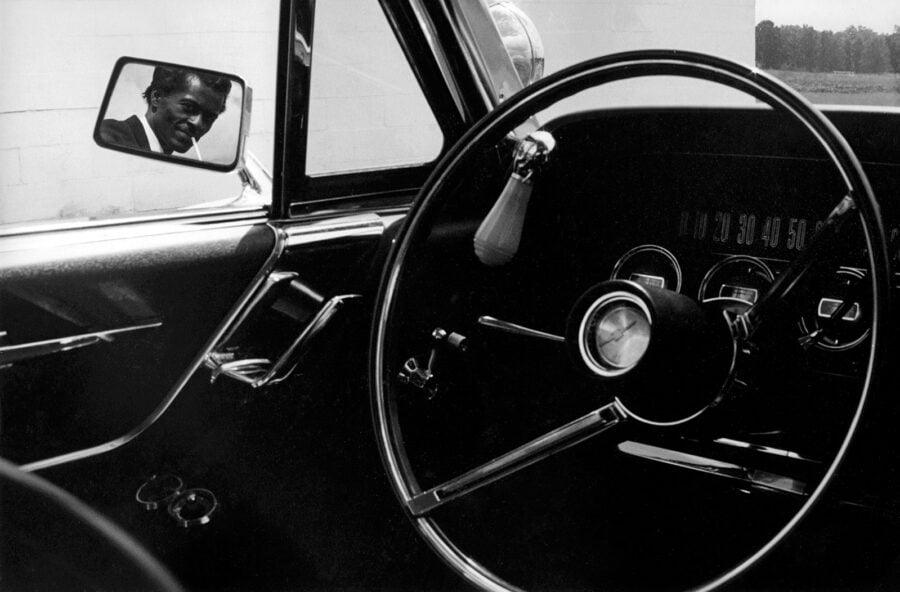
Chuck Berry on the road to Mobile, Alabama, October 1964.
© Jean-Marie Périer/Photo12
Discussed in this essay:
Chuck Berry: An American Life, by RJ Smith. Hachette. 432 pages. $32.
By the time Chuck Berry had his breakout hit “Maybellene” in the summer of 1955, he was already nearly thirty years old, with significant experience: he had spent three years of his adolescence in a reformatory for armed robbery; been a boxer and a janitor; worked in an automobile factory and an ammunition plant; trained as a hair stylist and a beautician; been married for nearly seven years; and been industrious and canny enough to purchase a pretty three-room house for…






















































































